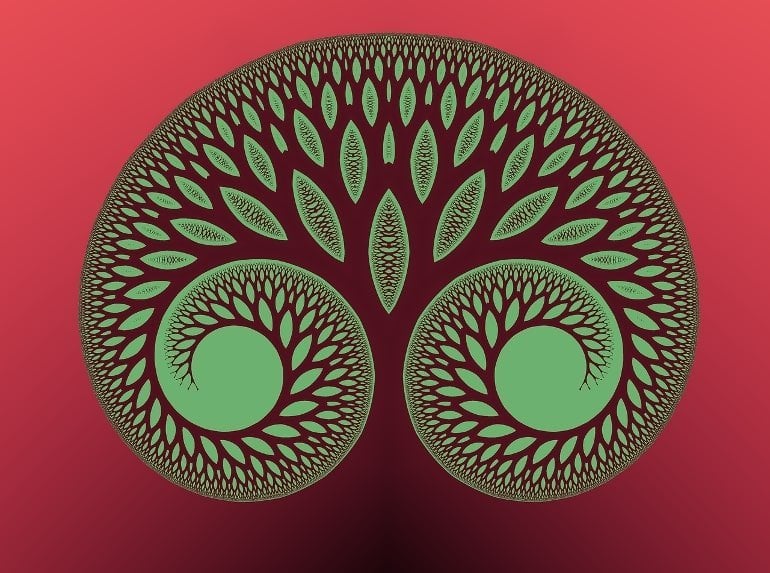Summary: Researchers studied the brain activity of healthy participants under the influence of nitrous oxide, comparing it to data from studies with ketamine and LSD to see whether the neurobiology of the psychedelic experience was similar. They found that the patterns of activity associated with the different substances overlapped, indicating common underlying biology, which could inform future research on the therapeutic use of psychedelics.
Source: University of Michigan
Nitrous oxide, colloquially known as laughing gas, has been used clinically as an anesthetic to dull pain since the 19th century.
However, in smaller amounts, it can induce mind-altered experiences, including feelings of bliss, spirituality, and the feeling of being outside of one’s body—much like those induced by the psychedelic substances LSD and ketamine.
A study led by George Mashour, M.D., Ph.D. and Richard Harris, Ph.D., of the recently founded Michigan Psychedelic Center at the University of Michigan Medical School takes a closer look at the neurobiology of psychedelic experiences.
Using fMRI, the team examined the brain activity of healthy people who were administered nitrous oxide and compared that activity to data collected from participants in different studies who were given ketamine and LSD to see whether the neurobiology of the psychedelic experience was similar.
In addition, this data was compared to a control group comprised of participants administered propofol, a commonly used anesthesia drug, to distinguish between brain changes not related to the psychedelic experience.
The team noted that participants under the influence of each psychedelic drug had decreased connectivity within a particular network but increased connectivity across various networks. Although there were notable differences, each psychedelic increased connectivity between the right temporoparietal junction and intraparietal sulcus in both hemispheres of the brain and between precuneus and left intraparietal sulcus.

These nodes, they note, are located in the so-called cortical “hot zone” of the brain, an area proposed to be critical for determining the content of conscious experience. This could help explain the altered states of consciousness described by people administered these psychedelic substances.
The fact that the patterns of activity associated with nitrous oxide, ketamine, and LSD overlapped hints at common underlying biology, they add. Further research to determine the specifics of this biology could help researchers determine how best to use psychedelics as therapeutics.
About this neuroscience research news
Author: Press Office
Source: University of Michigan
Contact: Press Office – University of Michigan
Image: The image is in the public domain
Original Research: Open access.
“Classical and non-classical psychedelic drugs induce common network changes in human cortex” by Rui Dai et al. NeuroImage
Abstract
Classical and non-classical psychedelic drugs induce common network changes in human cortex
The neurobiology of the psychedelic experience is not fully understood. Identifying common brain network changes induced by both classical (i.e., acting at the 5-HT2 receptor) and non-classical psychedelics would provide mechanistic insight into state-specific characteristics.
We analyzed whole-brain functional connectivity based on resting-state fMRI data in humans, acquired before and during the administration of nitrous oxide, ketamine, and lysergic acid diethylamide.
We report that, despite distinct molecular mechanisms and modes of delivery, all three psychedelics reduced within-network functional connectivity and enhanced between-network functional connectivity.
More specifically, all three drugs increased connectivity between right temporoparietal junction and bilateral intraparietal sulcus as well as between precuneus and left intraparietal sulcus. These regions fall within the posterior cortical “hot zone,” posited to mediate the qualitative aspects of experience.
Thus, both classical and non-classical psychedelics modulate networks within an area of known relevance for consciousness, identifying a biologically plausible candidate for their subjective effects.







